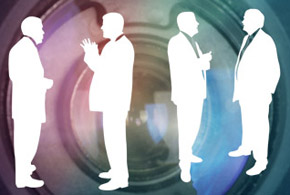As they entered San Francisco’s Moscone Center for Salesforce.com’s Dreamforce conference (Nov. 18-21), attendees were greeted by a banner displaying the event’s “Internet of customers” catchphrase. It’s the company’s take on the Internet of things buzzphrase that’s captured the tech world, but the idea here is that each of those “things”—whether it’s a cell phone, a car or even an Internet-connected toothbrush—has a customer using it.
During a keynote address, Salesforce CEO Marc Benioff and his executive team, which has spent years focused on the social enterprise, made it clear that they’re now zeroed in on helping companies reach customers through their “things.”
The centerpiece of that strategy is Salesforce 1, the company’s new platform for building mobile applications—not just for smart phones and tablets, but also for the Internet of things. The platform features 10 times as many APIs as the mobile platform it replaces in order to accommodate the range of products it will support.
“We need to reassess how we connect with customers in a whole new way,” Benioff said. “Customers have the answer.”
The answer he was referring to is how customers use and interact with products. To illustrate his point, Benioff pulled a prototype Net-connected toothbrush out of his pocket and said that one day soon, his dentist will be able to log into his toothbrush to review his brushing habits. Naturally, Salesforce wants the toothbrush app to be built on the Salesforce 1 platform.
By building apps for every connected product, companies will, in theory, be able to get up close and personal with their customers, and, presumably, meet their needs much more effectively.
As an example, Benioff said, “I think every product should have a mayday button.”
A short while later, such a “help” button was on display on a side stage, where Philips (the manufacturer of Benioff’s toothbrush) had placed its latest ultrasound machine in a mock hospital setting. The machine’s keyboard included a support button that, when pressed during the demo, connected with Philips’ Salesforce 1 environment and automatically logged a trouble ticket.
That, in turn, triggered a business process that led to an attempted firmware update and a subsequent service call. The software used geo-location data gleaned from mobile devices to identify and dispatch the closest available technician.
In an accompanying video interview, Philips CIO Jeroen Tas said Salesforce 1 has accelerated the company’s Internet of things strategy. “As an organization, you always want to be one step ahead, and you can only do that by knowing what your customers need,” Tas said. “We don’t see it as a toothbrush anymore. We see it as our ecosystem.”
Benioff said that’s exactly the kind of thinking Salesforce is trying to promote with its new platform for the Internet of customers. And he’s convinced it’s a mindset that every company will have to adopt.









